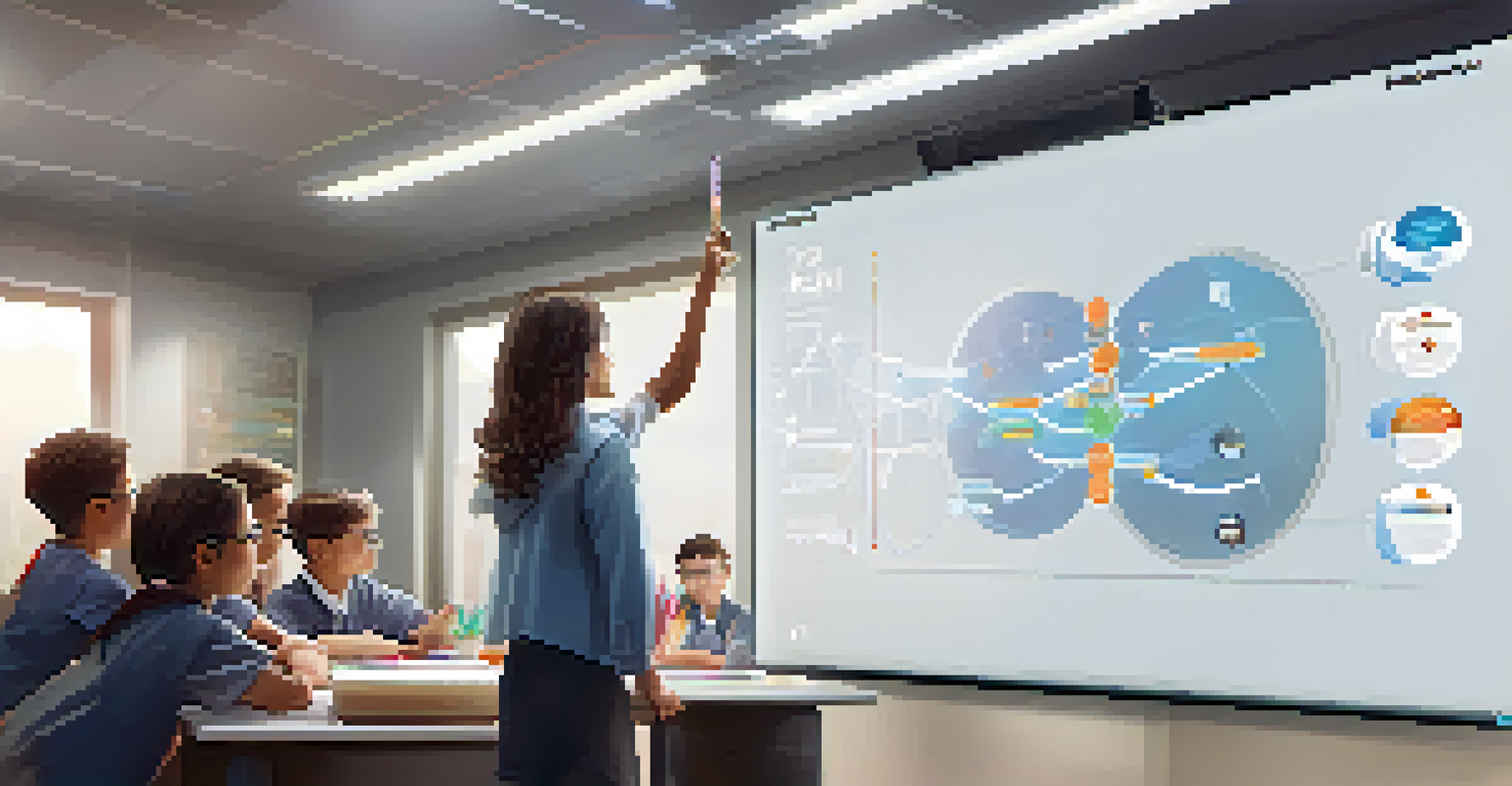SaaS in Education: Transforming Learning Environments Today

Understanding SaaS: A Game Changer for Education
Software as a Service (SaaS) is revolutionizing how educational institutions operate, offering cloud-based solutions that enhance accessibility and collaboration. Instead of relying on traditional software installed on individual computers, SaaS allows students and teachers to access resources from anywhere with an internet connection. This shift not only simplifies operations but also fosters a more connected learning environment.
Education is the most powerful weapon which you can use to change the world.
Imagine a classroom where students can collaborate on projects in real-time, regardless of their physical location. With tools like Google Workspace and Microsoft 365, group assignments become easier to manage, and feedback can be provided instantly. This flexibility supports diverse learning styles and encourages teamwork, skills that are crucial in today's workforce.
Ultimately, SaaS in education breaks down geographical barriers, making quality learning materials available to a broader audience. Schools can now reach students in remote areas, providing them with the same educational opportunities as those in urban centers. This democratization of education is one of the most significant impacts SaaS has had on the learning landscape.
Benefits of SaaS for Students and Educators
One of the most significant benefits of SaaS in education is cost-effectiveness. Schools can save on expenses related to software licensing, maintenance, and hardware upgrades. With subscription models, institutions only pay for what they need, making budgeting easier and freeing up funds for other essential resources.

Another advantage is the seamless updates and upgrades of educational software. With traditional systems, updates can often be a hassle, requiring downtime and IT support. However, with SaaS, updates happen automatically, ensuring that students and teachers always have access to the latest features and security enhancements without interruption.
SaaS Enhances Accessibility in Education
Cloud-based solutions allow students and educators to access resources from anywhere, breaking down geographical barriers.
Moreover, SaaS platforms often come with robust analytics tools that help educators track student progress and engagement. By analyzing this data, teachers can tailor their instruction to meet individual student needs, ensuring that no one falls behind. This personalized approach is essential for fostering a positive learning environment.
Enhancing Collaboration Through SaaS Tools
SaaS tools have transformed collaboration in educational settings, allowing for dynamic interactions among students and teachers. Platforms like Slack and Zoom enable real-time communication, making it easier for students to ask questions and engage in discussions outside of traditional classroom hours. This continuous interaction enhances learning and fosters a sense of community.
Technology will not replace great teachers, but technology in the hands of great teachers can be transformational.
Consider a scenario where a student struggles with a particular subject. With SaaS tools, they can easily message their teacher or classmates for help, creating a supportive network. This immediate access to assistance encourages students to seek help more often, reducing feelings of isolation and frustration in their learning journey.
Additionally, collaborative projects can thrive in a SaaS environment. Students can work together on shared documents, presentations, and reports, regardless of their location. This not only builds teamwork skills but also prepares them for a future where remote work and collaboration are increasingly common.
Personalized Learning Experiences with SaaS
Personalization is a key trend in education, and SaaS plays a vital role in facilitating it. With adaptive learning platforms like DreamBox and Knewton, students can engage with materials tailored to their individual learning speeds and styles. This personalized approach enhances understanding and retention, allowing students to thrive.
Imagine a student who struggles with math concepts. SaaS platforms can analyze their performance and adjust the curriculum accordingly, offering additional resources and practice exercises tailored to their needs. This targeted approach ensures that students receive support where they need it most, ultimately boosting their confidence and success.
Cost-Efficiency of SaaS Solutions
SaaS helps schools save on software costs and maintenance, making budgeting easier and freeing up resources for essential needs.
Furthermore, personalized dashboards provide students with insights into their progress, helping them set achievable goals. This empowerment fosters a sense of ownership over their learning journey, encouraging them to take initiative and actively engage in their education.
Challenges of Implementing SaaS in Education
While SaaS offers numerous benefits, it's not without its challenges. One major concern is the reliance on internet connectivity. In areas with limited access to high-speed internet, students may struggle to utilize these cloud-based resources effectively. This digital divide can exacerbate existing inequalities in education.
Another challenge is data privacy and security. As schools adopt SaaS solutions, they must ensure that sensitive student information is protected. This requires careful vetting of service providers and adherence to regulations like FERPA in the U.S. Schools must prioritize cybersecurity to build trust among students and parents.
Lastly, the shift to SaaS may require professional development for educators. Not all teachers are comfortable with technology, and providing adequate training and support is essential for successful implementation. Schools need to invest in ongoing professional development to ensure that educators can effectively integrate these tools into their teaching methods.
The Future of SaaS in Education
As technology continues to evolve, the future of SaaS in education looks promising. Emerging technologies like artificial intelligence and machine learning are set to enhance the capabilities of SaaS platforms, allowing for even more personalized and effective learning experiences. These advancements will further streamline administrative tasks, giving educators more time to focus on teaching.
We can also expect an increase in mobile learning solutions powered by SaaS. As students increasingly use smartphones and tablets, educational tools that cater to these devices will gain prominence. This shift will allow learning to happen anytime and anywhere, providing students with flexibility and convenience.
Personalized Learning with SaaS
SaaS platforms enable tailored educational experiences, allowing students to engage with materials that fit their individual learning styles.
Ultimately, the integration of SaaS in education will continue to transform how we approach learning. By embracing these technologies, institutions can create engaging, inclusive, and effective educational experiences that prepare students for the demands of the future.
Conclusion: Embracing Change in Education
In conclusion, SaaS is undeniably transforming the educational landscape, making learning more accessible and collaborative. By leveraging the benefits of cloud-based solutions, schools can enhance the educational experience for both students and educators. Embracing this change is essential for staying relevant in an ever-evolving world.
The shift to SaaS not only supports personalized learning but also fosters a culture of collaboration and innovation. As students prepare to enter a workforce that increasingly relies on technology, equipping them with the skills to navigate these tools is vital for their success.

As we look ahead, it's clear that SaaS will continue to play a pivotal role in shaping the future of education. By embracing these technologies and addressing the challenges they bring, we can create a more inclusive and effective learning environment for all.